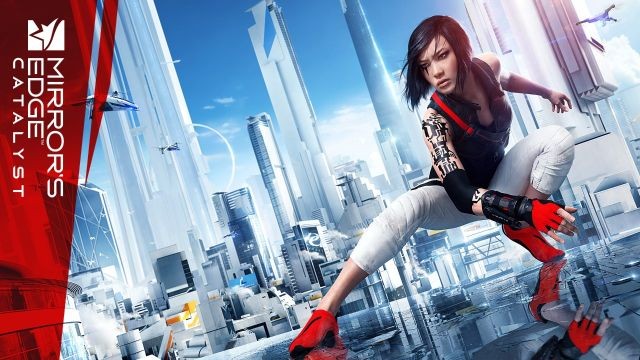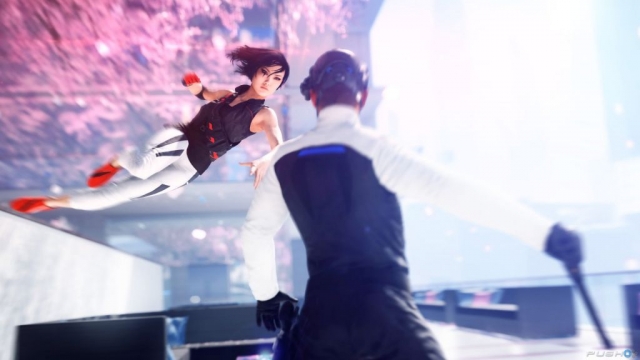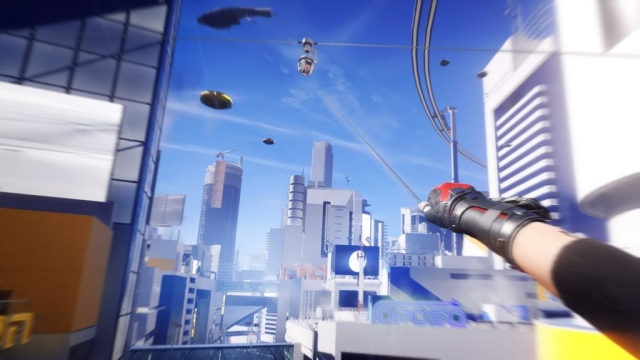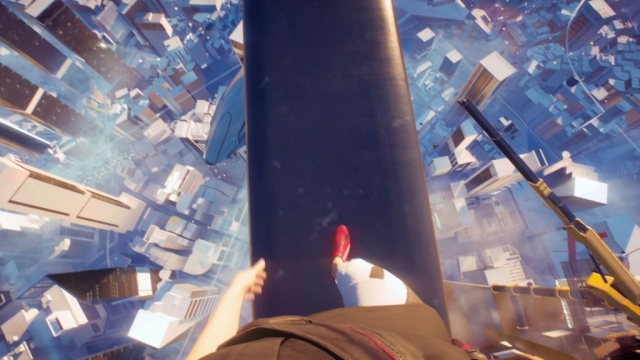Mirror’s Edge Catalyst

Platforming in first-person games isn’t much fun. I’m convinced a lot of developers have thrown it into their games over the years simply because Half-Life did it, and as it was in Half-Life, it’s typically the single weakest part of any game it’s in. There are exceptions, like Dying Light, but as a rule, first-person platforming is right up there with surprise stealth levels and escort missions. The only way to do it well is to not really do it at all.
That was the primary issue with 2008’s Mirror’s Edge. It was a visually distinctive, fast-moving action game with a great soundtrack and a memorable heroine, but it was also an attempt to cram a relatively realistic simulation of parkour running into a first-person perspective. It wasn’t entirely unsuccessful, but playing it felt like you were battling the game for control.
Mirror’s Edge: Catalyst fixes a lot of the problems the original game had, but the central issue is still there. It’s still a first-person platformer, and playing it still feels like you’re wrestling it into submission. It’s a game that requires precision but doesn’t provide it; it demands speed but constantly subtracts it.
There are moments throughout it, usually during some of Catalyst‘s more elaborate set pieces, where you can see glimpses of the game it’s meant to be. It’s supposed to be about speed and flow, and the primary goal is to just keep moving. In the rare moments where everything clicks into place, where the controls and environment cooperates, you get a smooth and organic experience that’s quite unlike anything else on the market. The problem is that this won’t happen often, if at all.
Catalyst is a reboot, and doesn’t keep much from the original game besides its concept, its protagonist (and even then, just her name and face), and its visual design. It’s set in a distant future, where the world’s slowly rebuilding itself under the rule of a handful of family-run corporations. The city of Glass is part of the nation of Cascadia, owned and operated by the Krugertech company.
You play as Faith Connors, fresh from a year-long stretch in juvie and ready to get back to work. She’s one of the runners, a gang that lives off the grid on the rooftops of Glass, doing whatever under-the-table jobs that come their way. One night, Faith runs into the CEO of Krugertech and decides to steal his phone, on the basis that there’s probably something on it that she can sell. This turns out to have been a very bad idea.
After the first couple of hours of Catalyst, I was frustrated with it. Even relatively short falls can kill you, the first district of the city is also the least interesting one, and I was constantly wrestling with both the first-person perspective and the controls.
To be fair, I stuck with it, and as I progressed through the first few story missions, things did get better. You get more tools to explore the city with, such as a grappling hook, and that lets you go explore some more interesting neighborhoods. The office district is all blue glass and surreal statuary, for example, and the rich people’s apartments on the water all look like they’re from some art-deco painting of the future. Glass is too empty and open to feel like a place in its own right–it’s not much more than a series of conveniently open windows and unlocked doors–but it makes a great playground.
I never quite stopped fighting with the controls, though. I played the Xbox One version, where you press the left bumper to do just about everything; it’s the button to jump, climb, grab onto handholds, run along walls, fire your grappling hook, and vault off of ropes and poles. What’s killed me more than anything else is pushing LB for one function and getting another. I want to grab a pole to swing off of it, and instead, Faith wall-runs to her death; later, I’m looking for a simple wall run, and Faith goes for a ten-story swan dive. It turns anything but the simplest actions into Russian roulette.
Finally, there’s the first-person view. To be fair, Catalyst tries to do this right, as Faith is fully rendered from the neck down. A lot of games wouldn’t bother, so you’d end up trying to navigate a balance beam with a character who doesn’t technically have feet. Faith does, so you have a much better sense of spatial awareness than you would otherwise.
That solves half the usual problem, but you’re still stuck looking at the game through your character’s field of vision. This is fine when you’re jumping across the occasional gap, but as the game asks you to perform more complicated stunts, the first-person perspective becomes more and more of a handicap. Handholds end up behind or above you, it starts throwing in blind turns or hidden hazards, and the game has to use up a button on a 180-degree quick-turn so you can do the old wall-jump trick. There’s really nothing about Catalyst that’s improved by the first-person perspective, and it has to do a lot of design work to compensate for it, so I have to ask why it’s a first-person game at all.
Somewhat less relevantly, Catalyst goes out of its way to make Faith move somewhat realistically, and you never leave her perspective during gameplay, aside from a couple of pre-animated finishing moves. When Faith does a somersault to break her fault, gets knocked over, or botches a landing and lands on her face, the camera turns and flips just as she does. I usually don’t have problems with motion sickness in games, but Catalyst gives me a headache.
There’s a whole laundry list of other things I truly dislike about Catalyst. Faith has a profound objection to grabbing anything but the most obvious railing or ledge, just as she did in the original. The combat can be fun, since it focuses heavily on kicking dudes into furniture, off railings, and into other dudes, but it’s also shallow. The final mission has a brand-new gimmick involving panes of glass that isn’t explained well, and seems like it can only be avoided through trial and error. The user-generated content is just sign-posts and time trials, worth doing once each for a related achievement and then forgotten entirely. I’ve got a hundred of these.
I did have some fun with the game, though. The story kept my interest right up until the end, the Grid Node missions are a well-designed old-school platforming challenge, the cast of characters is decent, and I like the music.
Most importantly, though, like I said, when the game clicks, it really clicks. For me, the biggest moment was late in the story missions, when I got down from a high point in the city to discover every security guard in the world waiting for me. I took off running, bouncing off several of them like they were Koopa Troopas, and sailed across a street with my grappling hook. It was all pure flow. It was a highlight of my experience, and was like a window into what the game was supposed to be.
It’s possible it’ll be easier for that to happen for you than it was for me, since I have a lot of muscle memory working against my attempts to play Catalyst. Right up until the end, I was occasionally hitting the right bumper to wall-run, because that’s how you do it in a couple of other games. Part of the problem here is with me.
I’d still argue that Mirror’s Edge: Catalyst is a failure, but it’s an interesting failure. It started from an idea that nobody’s been able to make work, and it still didn’t make it work, but an attempt was made. I’ll take that over a game that’s simply mediocre any day of the week.
Reviewed By: Thomas Wilde
Publisher: Electronic Arts
Rating: 60%
——————————————————————————–
This review is based on a digital copy of Mirror’s Edge Catalyst for the Xbox One provided by Electronic Arts.
 Game Over Online
Game Over Online











